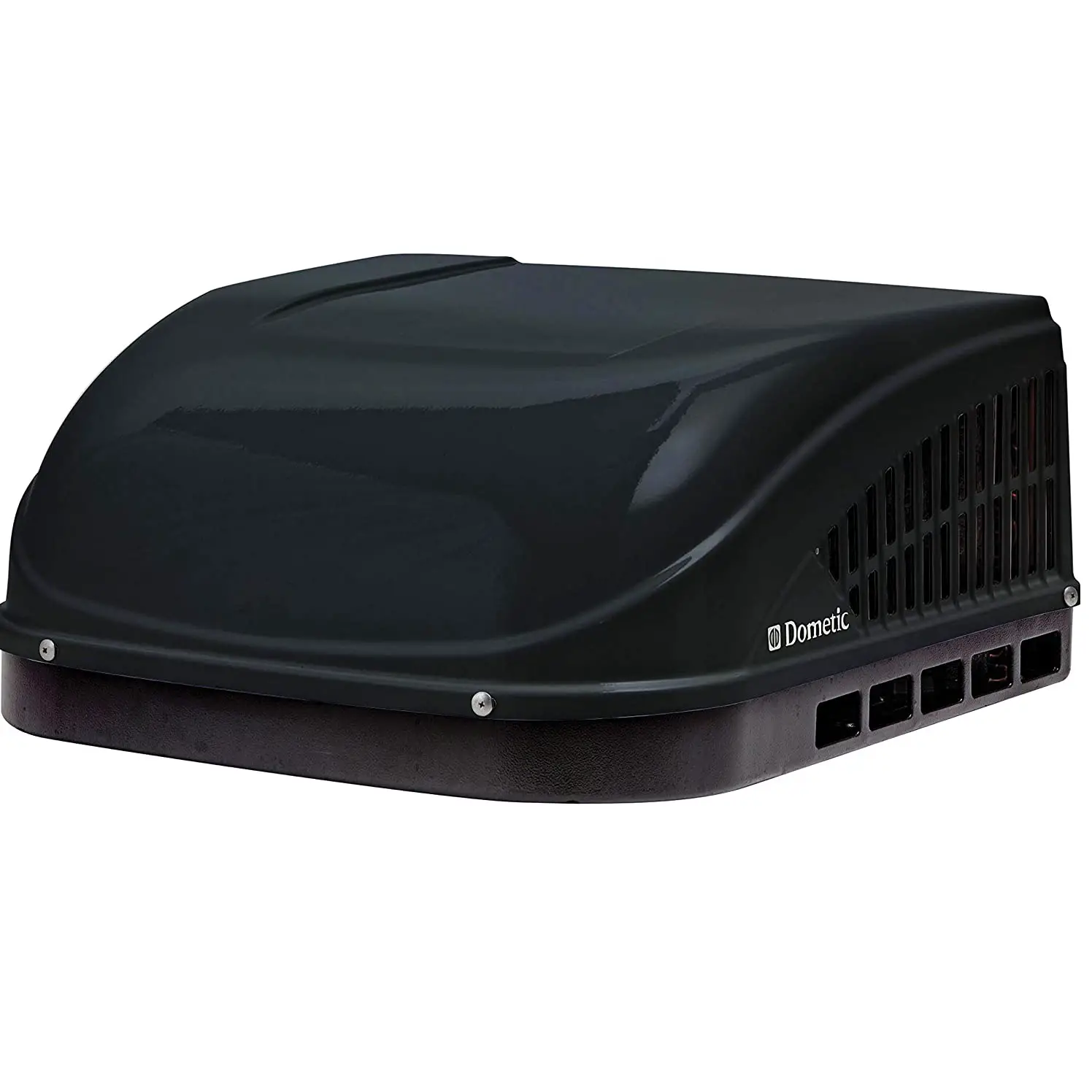
- Brand Dometic
- Color Black
- Item Weight 72 Pounds

- Brand Honeywell
- Color White
- Item Weight 32.2 Kilograms
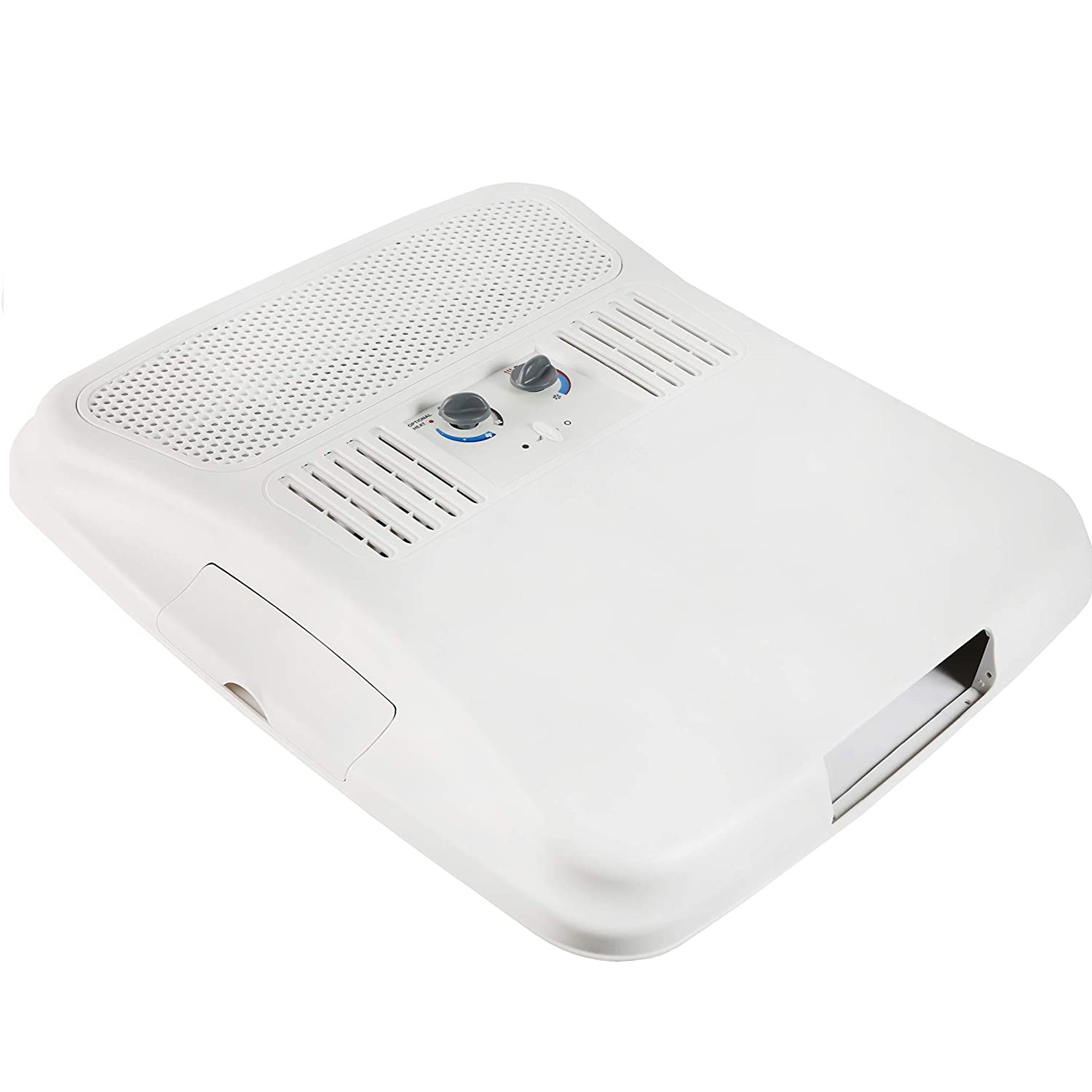
- Brand Dometic
- Color White
- Item Weight 10 Pounds
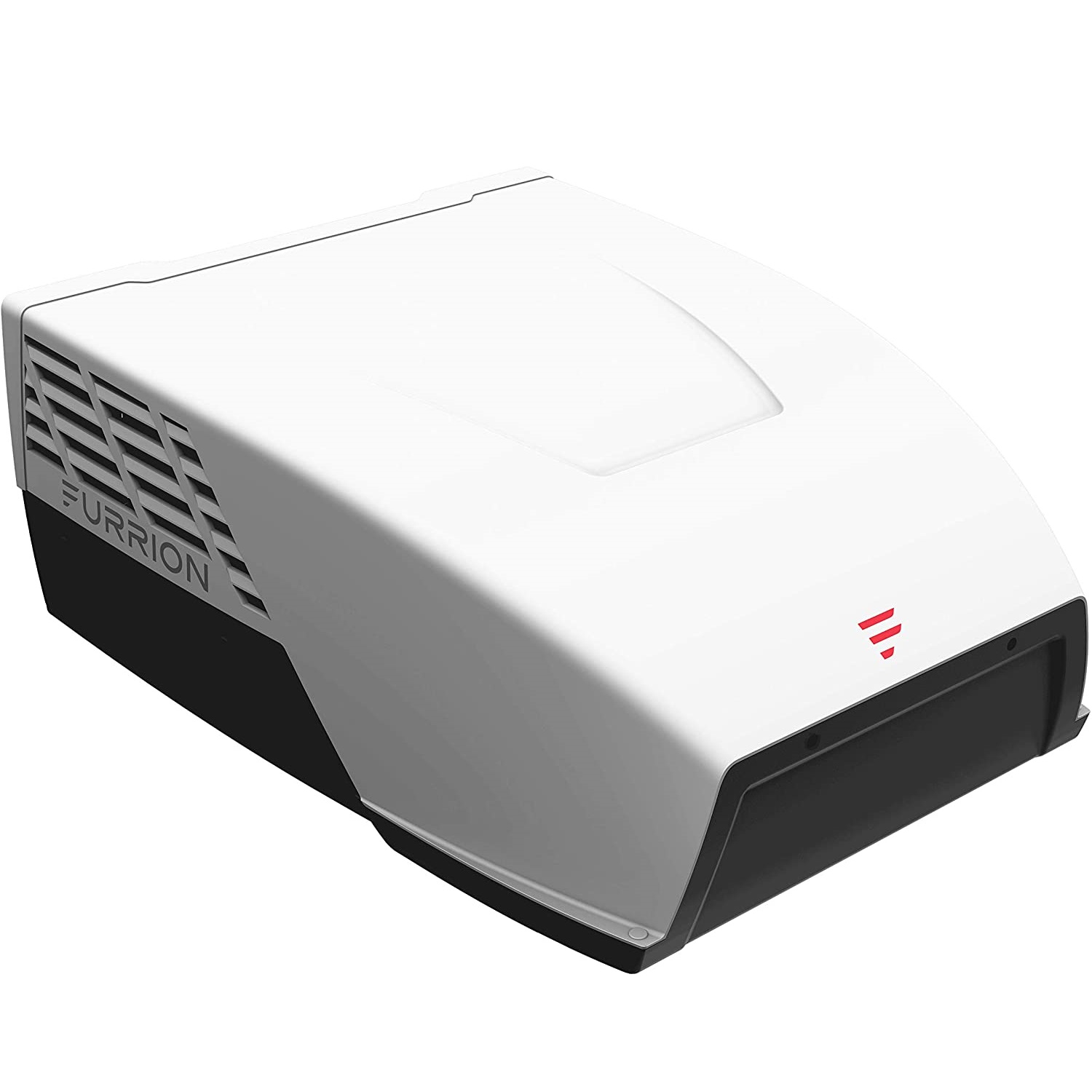
- Brand Furrion
- Item Weight 88.2 pounds
- Instruction Manual
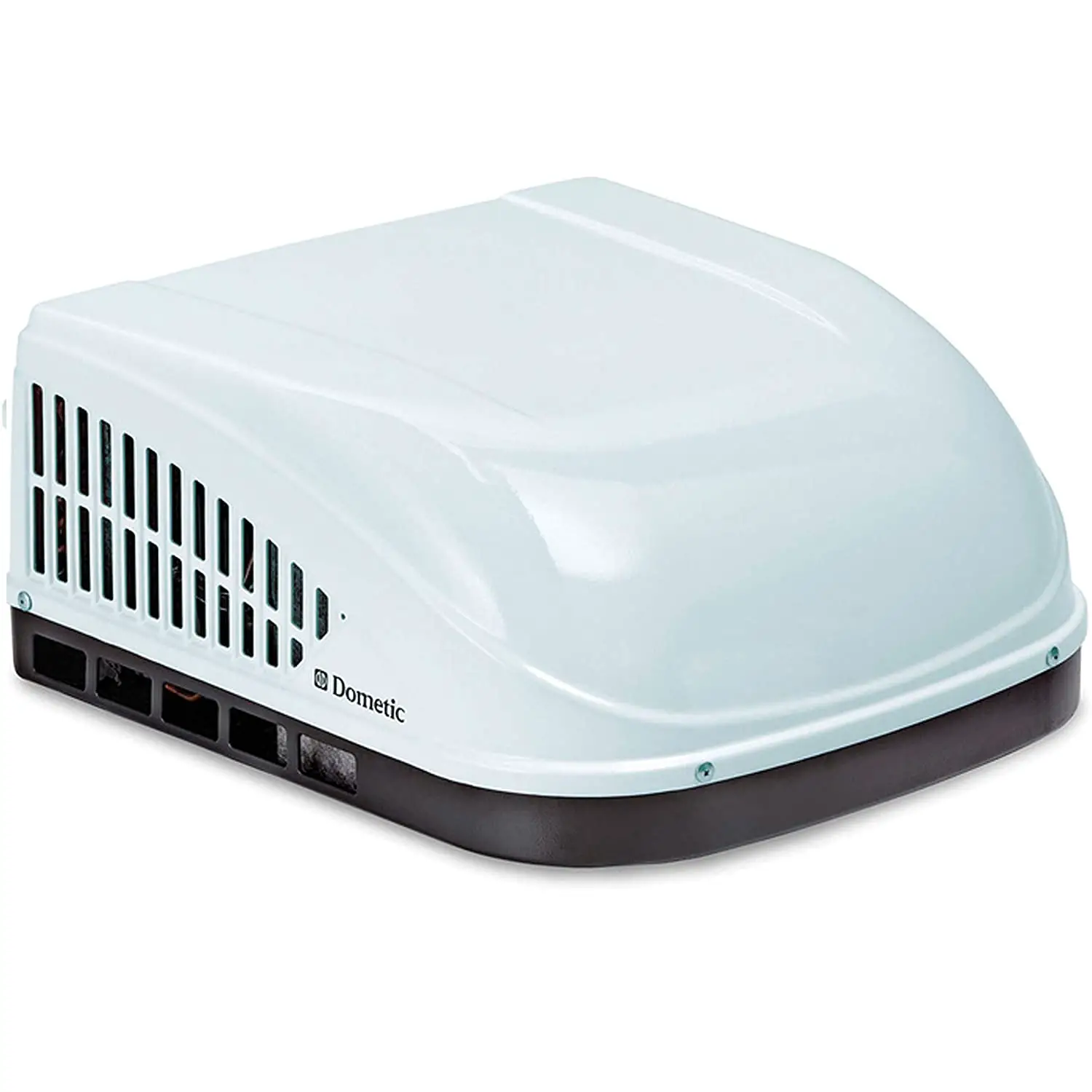
- Color White..black available
- Item Weight 81 Pounds
- Voltage 110 Volts
Choose the Best Best RV Air Conditioner
Customer’s Choice: the Best Rated RV Air Conditioners
6 users answered this survey. Please help us improve this review!
Choosing the best RV air conditioner can be a daunting task. There are so many different models and brands to choose from that it’s hard to know where to start. Well, we’re here to help! In this post, you’ll learn all about the types of units available for your RV, how they work and what features you should look for when shopping around. We’ll also show you some great selections that will suit any budget or need. So let’s get started!
Table of Contents
Dometic Brisk II Rooftop Air Conditioner, 13,500 BTU – Black (B57515.XX1J0)
 There’s nothing worse than being scorching hot during the summer. Dometic Brisk II Rooftop Air Conditioner pumps out all the cool air you need, with 13,500 BTU/hour performance and 115-volt input voltage.
There’s nothing worse than being scorching hot during the summer. Dometic Brisk II Rooftop Air Conditioner pumps out all the cool air you need, with 13,500 BTU/hour performance and 115-volt input voltage.
All this great air without the addition of heat is perfect for any size RV. The Brisk II has a smart design and improved materials that allow it to maximize airflow without making the annoying noise of other air conditioners. With reduced vibration, these dampening brackets are an awesome way to keep your house looking young! So stop sweating it…save today with Dometic Brisk II!
Honeywell MN10CESWW Environmental Appliance
 Your whole family will be enjoying your new Honeywell MN10CESWW Environmental Appliance as soon as you install it. Stay cool all summer with this powerful cooling window unit, and don’t sweat those humid days coming our way because a dehumidifier that removes up to 30 pints of moisture per day is included!
Your whole family will be enjoying your new Honeywell MN10CESWW Environmental Appliance as soon as you install it. Stay cool all summer with this powerful cooling window unit, and don’t sweat those humid days coming our way because a dehumidifier that removes up to 30 pints of moisture per day is included!
The full set includes two filters and a remote so you’ll never have to get away from the comfort of home again. And with three fan speeds and a 24-hour energy-saving timer for simple controls that everyone can do, there’s no excuse not to own one.
DOMETIC Air Conditioners 3314851.000 Adb Man Control PLR Wht F/All, White
 Introducing the newest and most advanced air conditioning unit on the market today! With a class-leading ADB (Automatic Defrost Control), you won’t need to worry about those long cool seasons.
Introducing the newest and most advanced air conditioning unit on the market today! With a class-leading ADB (Automatic Defrost Control), you won’t need to worry about those long cool seasons.
And with your temperature full range heating or cooling function, you can set those temperatures just right whatever day of the year it is. Not only that but because this model doesn’t require ducting, installation couldn’t be easier either – really simple for any DIY’er out there looking for an easy weekend project! What are you waiting for?
Furrion FACR14SA-PS RV Air Conditioner
 If you’re looking for a high-quality, easy to install RV air conditioner, the Furrion Chill series is perfect for you! They are designed with VibrationSmart Technology which helps resist vibration and ClimateSmart Technology that allows them to function in extreme climates.
If you’re looking for a high-quality, easy to install RV air conditioner, the Furrion Chill series is perfect for you! They are designed with VibrationSmart Technology which helps resist vibration and ClimateSmart Technology that allows them to function in extreme climates.
The Furrion Chills come in 14,500 BTUs (the highest out of any leading company), so they really move cooling air quickly and efficiently inside your RV. Get the top of the line RV air conditioner to see your family and pets enjoy their vacation just as much as you do.
Dometic Air Conditioners B59186.XX1C0 Brisk Air II Heat Pump 15 Roof
 It is the bold, confident choice for home comfort. Choose Brisk Air II to instantly give your home an invigorating boost of energy with its sleek design and modern aesthetic.
It is the bold, confident choice for home comfort. Choose Brisk Air II to instantly give your home an invigorating boost of energy with its sleek design and modern aesthetic.
With all-electric components hidden inside the patented inverter board cabinet, it looks just as good on the outside as it feels on the inside. With a minimum cooling capacity of 12000 BTU and a heating capacity of up to 11600 BTU, this versatile compressor-free air conditioner will keep you at ease through any season!
Buyer’s Guide
Benefits of an RV AC
- Can be used in multiple locations. Many AC units are built to work indoors and outdoors making them flexible machines that can go with you wherever life takes you without any complications concerning compatibility or setup.
- Provides a steady, reliable airflow. Unlike window units whose airflow is dependent on the size and shape of your windows, an RV AC unit’s efficiency isn’t affected by outside conditions such as wind or other weather factors that may come into play with less stable machines like portable fans.
- Maintains a constant temperature. Because of their low-profile design, window units can be used to cool smaller spaces but they lack the power and insulation needed for larger areas that may require central AC systems or even whole RV generators.
- Can work without draining your battery. Most portable fans are powered by batteries which need to be recharged frequently depending on how much you use them.
- Is easily installed without expensive modifications to your camper shell or trailer frame because there’s no piping for exhaust systems or any bulky vents that need to be drilled into your vehicle’s exterior.
- Saves money in energy costs. Since you’re likely to be spending extended periods of time living in your camper van or motorhome, having an effective way to cool it down without resorting to open windows can help keep those high electric bills from piling up too much over time if you choose wisely between all the options available.
- Keeps you cool even when the power goes out. If your camper van or motorhome does not have a generator it’s important to choose an energy-efficient alternative so that you can stay comfortable without worrying about draining all of your battery life during hot summer days where temperatures are high and the sun is beating down hard on top of you.
- Creates less noise pollution than other alternatives. When living in close quarters having something loud like a portable fan blowing constantly while trying to sleep can get annoying very quickly, especially if it’s right next to your bed.
- Can be used as a heater in winter months to keep you warm and cozy during the coldest days of the fall, winter, and spring seasons when temperatures drop down below freezing or fluctuate between extremes that vary from one day to the next.
Types of RV Air Conditioners
Before you begin looking for the best RV air conditioner, you should know about all of your options. In general, there are four main types.
Rooftop
A rooftop air conditioner is the most common type of RV AC. It sits on top of your rig and delivers cold outside air through a duct inside your vehicle.
Rooftop units deliver cold air through a duct inside your vehicle. They’re typically window or roof-mounted and come in both portable and permanent-installation varieties (the latter is more common).
The main benefit of a rooftop air conditioner is that it’s generally the most affordable option. They also have better installation options than other types, so you can put one in at your convenience.
However, since these are large pieces of equipment they may take up too much room within your RV if there isn’t enough space around them already (in other words, make sure you measure first).
The main drawback of this type of AC unit is that they do not cool well when mounted on an incline or are placed near objects that get hot during the day (like a windshield).
Roof-mounted air conditioners are also not good for RVs with skylights or other roof windows since they block airflow and make it difficult to get rid of condensation. This is why we recommend window units instead of rooftop ones if you have one of these issues on your RV.
Rooftop air conditioners are the best choice for your RV if you don’t want to do any installation work yourself. Choose this model if you like having someone else take care of everything (or aren’t sure how).
This type may not be right for smaller vehicles or RVs that have already used up all their space with other appliances, etc. Make sure there is enough room around them before you buy!
Under-Bench
Under-bench air conditioners are very similar to roof units. The main difference is that they sit below your RV’s bench (or elsewhere inside the living area) instead of on top of it, so they don’t take up valuable rooftop space.
The benefits and drawbacks of under-bench AC units are almost identical to those for roof models, except that you can choose where in your vehicle you want them installed since there’s less concern about blocking access or airflow through windows.
The main benefit of under-bench air conditioners is that they don’t block your view while driving. They also work well with RVs that have roofs windows or skylights, since they do not interfere with airflow or create condensation issues like roof-mounted units sometimes do.
Under-bench ACs are the best choice if you’re looking for an affordable option but still want to avoid losing any space in your living area due to installation (plus, many people find them easier to install than rooftop models).
They may not be a great idea if you need something relatively large and/or powerful though – these probably won’t cut it! These aren’t designed for larger vehicles or more demanding applications. If you need something with a lot of power for your RV, you might want to consider another option.
Portable
Portable air conditioners are a great choice for any RV owner who doesn’t want to go through the hassle of installing their own model. They can be carried from place to place, so you don’t have to find somewhere permanent inside your rig to put them in.
The main benefit of portable AC units is that they’re easy and convenient – just plug them into an outlet wherever you need some cold air!
They also usually cost less than other types (although not always). Some people think these deliver the best overall value since you can easily move them around depending on how much cooling power you need at different times throughout the day/night.
However, this type does often require a separate window unit or vent (since they use up so much electricity). They can also be quite loud when working at full power, especially if you’re trying to sleep.
If your main concern is saving money or portability above everything else though, this could be the right choice for you!
You should probably avoid these models if the sound is an issue and/or you want something powerful enough to work well in larger vehicles without having to buy multiple units – it’s not worth it here. If noise while sleeping is a problem for you, don’t get one of these ACs without purchasing some sort of white noise machine too. This will help mask any ambient sounds that come from the unit itself even more than usual since there are no other noises to drown it out.
Window Units
Window ACs are another good choice for people who don’t want to install any permanent models in their RV, or simply need something that can be easily moved around. They work well in RVs with limited space, especially smaller ones where you might not have enough room inside your vehicle for anything else!
They’re also pretty simple – just plug them into an outlet and they’ll start working right away. As long as the window is open when running though, this type of unit will cause most windows/blinds etc. to freeze over quickly if it’s cold outside (and vice versa).
The biggest drawback of using a standard window air conditioner is that these aren’t very powerful at all – many only provide cooling power in the range of 500 BTU (which is pretty small). These are best for people who need something small and portable, or just don’t want to spend a lot of money on an AC unit.
If you’re looking for something that’s more powerful though, this is probably not the best option.
This might also be a bad choice if you have pets – they can easily hurt themselves by jumping up against frozen windows/blinds etc. when trying to escape! Save yourself some future vet bills and try one of the other types instead (or at least make sure your pet(s) know never to jump onto cold surfaces).
These aren’t designed with larger RVs in mind either – even those rated below 500 BTU will struggle to do much good here (in terms of cooling power), so you’re better off with something stronger.
In addition, they do tend to be quite loud at times – if this is a deal-breaker for you then avoid getting one of these ACs! You’ll probably want some sort of white noise machine as well (or similar) even though most window units will create their own sounds too.
If you’re mostly looking for something that will keep your RV cool and comfortable on a budget, this is probably the right choice. Just make sure to pick one with enough power – it can be super frustrating if they don’t work as well as expected!
Things To Consider When Choosing The Best RV Air Conditioner
There are many things to consider when choosing the best RV air conditioner. To help you out, we have chosen the most important features of the ideal model for your vehicle.
Low Profile Vs Full Height RV
To determine which RV air conditioner is best for you, it’s key to know the difference between low profile and full height AC units. Full-height models are generally more expensive but also offer higher cooling capacities. This makes them ideal if you have a larger vehicle or require greater levels of comfort throughout your trip. Low-profile models are cheaper because they take up less space inside your home on wheels.
Low Profile:
- Less expensive than full height units.
- Easier to find a space for and install.
- Typically provides higher levels of comfort.
Full Height:
- Easier to find a space for and install.
- Typically provides higher levels of comfort.
- Offer greater cooling capacities at the expense of more limited installation locations inside your RV.
- Require more power, which makes it harder to run them off solar panels.
In short, full-height models are less expensive and easier to install but offer greater cooling capacities at the expense of having a much smaller range for installation locations inside your vehicle. Low profile units cost less and provide higher levels of comfort within a larger space in your RV but lack the same level of potential cooling capacity as their full height counterparts.
Cooling Capacity (BTUs)
Cooling capacity is the amount of heat a unit can remove from a room in one hour. A BTU (British Thermal Unit) is defined as the quantity of heat required to raise one pound of water by one degree Fahrenheit at sea level.
For example, The average BTU per hour needed to cool a room is 3500. Therefore, an air conditioner that has the ability to remove 7000 BTUs will be able to cool two rooms or one large space such as your living room and kitchen at the same time.
This means you need more than 8000 BTUs if you want it for all three of these applications, which makes most 12000 BTU units great options for larger RVs.
It is important to note that because of the extra insulation and higher ceiling in an RV, you will need to increase BTUs by 30% over what is needed for a standard home.
An alternative way to determine your unit’s cooling capacity is using this formula: Room Size x Ceiling Height x .08 = Required Cooling Capacity
For example, A room with 100 square feet on the floor and sloping ceilings at 12 feet would have 800 cubic feet. If we plug these numbers into our equation it looks like this: 800x12x.08=9600 BTU
This means if you are looking for the best RV air conditioner, then one rated at 9000 BTU or above should do the trick.
If you want to purchase an air conditioner that will cool your RV’s living space effectively, then it should have high cooling power. The higher its number, the better and faster it will perform under extreme weather conditions such as hot temperatures and humidity levels.
Noise Output
Often when you are camping, the last thing you want is to have your sleep disrupted by a noisy AC unit.
The noise output of an RV air conditioner depends on several factors. Firstly, is the unit an Inverter AC. Inverters work with batteries and save energy by turning high voltage into low voltage. Because of this, they tend to be a lot quieter than those that don’t have inverting technology.
In addition, some RV air conditioners utilize sound insulation materials which help minimize noise output and make camping more enjoyable for everyone!
Another factor in determining noise level–if you are looking at window units–is how it attaches to your windowsill (with or without extenders). If you do go with one of these types; we recommend getting yourself some sturdy silicone tape to attach them securely before going on any road trips, as well as possibly purchasing new seals if needed after many uses. Just like every household AC unit, it is important to regularly check for any leaks as well.
If you are looking at a portable air conditioner there are other factors that can incur more noise output including the fan speed and compressor type–and if an inverter isn’t involved then your energy savings will be diminished due to higher sound levels.
As far as noise levels go; you want to make sure the unit isn’t too loud for your camping neighbors, but not so quiet that it doesn’t cool down your space!
Power compatibility
In order to be compatible with the current in your RV, you have to choose an air conditioner that can use 12-volt power. Most of them are designed for low voltage and most RVs cannot handle a high load on their electrical systems.
You can find a lot of inverters and converters that can easily convert 12-volt power into the 240 volts you need. They will provide you with the right amount of power and keep your appliances safe.
But if you don’t want to use an inverter, there is another option: simply choose a low-wattage air conditioner that won’t make too much stress on your RV’s electrical system. Make sure to check its amperage before buying it.
However, there is another option: using two air conditioners or even more than one unit to create enough power for your needs. This way, you will be able to cool your RV at night as well. The downside is that it costs significantly more money.
Power consumption and efficiency
The power draw depends also upon the size of your air conditioning system (measured in BTU/hour). There are numerous models out there with different power ratings ranging from 5000 BTU/hr to 36000 BTU/hr. A larger AC will use more energy but it will cool down faster while not needing constant repairs due to overuse like a smaller model would require.
The main problem with AC power consumption is that it can add significantly to your energy bills. In one hour, a 12000 BTU/hr air conditioner will cost you approximately 50 cents at the national average of 11¢ per kWh. Of course, these numbers vary depending upon where you live and how much use your unit gets throughout the year.
The good news is that newer RV air conditioning systems are getting more efficient each year while becoming smaller in size due to better insulation techniques employed by manufacturers. One should also consider replacing older models which were less energy-efficient than their modern counterparts sold today because they could quickly eat up all your money for electricity over time. On average, expect an increase of about 30% or so from the 2000 model to the current one.
The best RV air conditioner will have an Energy Efficiency Rating of at least 12 which means that it operates on about 12% less energy than required by the Federal minimum efficiency standards for mobile homes, thus saving you money in the long run and making up for its higher initial cost.
On top of being more efficient, new AC units are also much quieter because they use improved sound insulation materials to dampen bothersome whirring sounds heard outside your home when running as well as from inside if placed near bedrooms or areas used often throughout the day that require quietnesses such as libraries or offices.
While there are several different types of RV AC units out there, one can be chosen by considering its power consumption and efficiency rating as well as how much noise it produces when running. For example, if you have no problem with slightly higher energy bills but need to run your unit constantly throughout the summer then consider getting a larger model that uses more electricity while being cheaper upfront. On the other hand, if you prefer having an efficient yet quiet system so people do not get annoyed at night or during the day from an air conditioner that can barely be heard then consider getting a smaller model with higher EER.
When choosing between two similar units, opt for the one with a slightly better efficiency rating because this added benefit will make up for its slight size while lasting significantly longer before requiring repairs.
Vent position and number
The vent position and number of vents play an important role in the performance of your RV air conditioner. Most RVs have one or two roof-mounted AC units with up to four outputs which you can connect to a maximum of three different zones (zone meaning each area that needs cooling). The more you open “zones”, the lower the output power for any given zone. If possible, keep all zoned closed except for where it is really needed at that time. Letting fresh air into your camper while driving will also help reduce fogging on windshields when you stop somewhere!
A number of vents:
The number of vents is important because you need to know how many outputs it has. The number doesn’t matter if there are no zoned areas in your camper, but generally speaking the more output openings (vents) there are on an air conditioner, the better and colder the airflow that comes out of them. The downside with too many vent holes is that they allow for warm or even hot outside air while driving which can lead to condensation problems when not parked somewhere cool enough at night. An AC unit should have at least two vents — one overhead and another near floor level so cold air falls down from above and gets under furniture where people sit/sleep or other items such as pets.
Position of vents:
The position of the vent is important because it allows you to direct airflow where you want it — at bed or seating area, and away from cooking/showering spaces (when camping). If possible, try to put both vents in positions that allow for good airflow across your sleeping space if there’s one person who sleeps alone; aim the overhead vent towards a corner where two walls meet and point the other low on either side wall so cold air falls down toward feet when lying under sheets etc. Also, make sure any heating appliances such as propane cooktop are not blocked by an open vent. The lower output should be aimed anywhere but near hot appliances like microwave ovens which could lead to a fire if you’re not careful.
Air purification
This feature is available on some of the best RV air conditioners. It’s designed to keep allergens and other pollutants out by removing smoke, pollen, bacteria, pet dander, dust mites etc. This way you can breathe easy even while travelling in your vehicle during hot summer days or inside without worrying about the quality of air around. The unit also filters water which helps prevent mould growth that may lead to allergies later down the line. You should look for one with a carbon filtration system because it does a superior job at keeping the environment clean than any other filter type.
This is an important feature of any RV air conditioner. You can use it to adjust airflow for different seasons or times of day, depending on your preferences and needs. Basically, the unit comes with three fan speeds that you can choose from – low, medium and high. When cooling down larger vehicles like RVs during hot summer days you should opt for faster speeds because they more efficiently remove heat than lower modes. This way you save energy as well which is great considering some models are quite expensive to purchase in the first place.
Size And Weight
The first step to determine what kind of air conditioner you need is to consider the size and weight. The biggest factor for determining how much space your air conditioning unit will take up in your RV is its BTU rating, which determines the amount of power it uses.
-Weight: Air Conditioners can be heavy depending on their wattage – usually between 25 and 40 lbs., so make sure that they can easily fit into an area already containing appliances and furniture without having to worry about whether or not a large AC unit will work with your current setup.
-Size: Since air conditioners are usually around a foot in-depth, you would want to make sure that the AC unit will fit into your RV without being too big for an already pre-existing space. You can measure how much room is available before purchasing or take measurements of the area itself if possible so you know what kind of size and weight restrictions may be present when looking at new units.
The best way to measure the size of your AC unit is by its height, width and depth. Make sure that it can fit into a window or other area without taking up too much space.
Air conditioners come in a variety of sizes, but the most common are window units. These can be either 19 inches wide or 24 inches wide and they vary between 20 to 26 inches in height.
A smaller unit is usually preferable for RVs because it gives you more room to work with when trying to find an area that’s already crammed with existing appliances and furniture pieces. However, if your RV has ample space then there’s no reason not to go big! Just make sure that whatever air conditioning unit you choose fits into the spot where you have decided to place it before buying anything so as not to waste money on something too large or small which will inevitably need to be moved around during installation.
- RV Air Conditioner Size: As discussed above, there are two main sizes for RVs – 19 inches or 24 inches (for width) and 20 to 26 inches (for height). Whatever size suits your needs best is up to you; however, we recommend going as big as possible because having proper ventilation in place helps maintain fresh air quality which means fewer odors from food preparation and other activities taking place inside your RV!
- Window Size: As for window sizes, it’s best to ask the manufacturer what size of window unit their air conditioning unit will work with.
Insulation strength
The insulation strength of the air conditioner is important for providing your RV with adequate protection in extreme weather. It can help prevent short-circuiting, overheating and electrical problems that could lead to fires if you live in an area where temperatures are highly volatile or experience frequent storms.
An air conditioner’s R-value is the rating used to measure its insulation strength. The higher this number, the stronger an air conditioner can resist heat transfer indoors and outdoors. When you are looking for a new RV air conditioning unit or replacement part, knowing which type of material will be most suitable comes down to understanding how it differs from other materials, especially regarding resistance against weather conditions that might damage your unit over time.
There are three common types of material used in the insulation properties for air conditioners. These include polyurethane, high-density foam and neoprene rubber. Each material has a different R-value, which directly correlates to its insulation strength.
Polyurethane is the highest-rated material for RV air conditioners. Its R rating falls between three and five with this number representing how well it resists heat transfer through conduction, convection and radiation. High-density foam has an R-value of up to one but can protect against moisture as well as electric shock. Neoprene rubber only offers very minimal protection from the elements so should not be considered if your climate experiences extreme temperatures or lots of rain or snowfall each year.
To ensure that you have chosen the best type of insulation materials for your needs, consider where in your RV you plan to use them most frequently and what kind of weather you are likely to encounter. You can also speak with an experienced dealer about the best insulation materials for your RV air conditioner replacement part or an entire unit.
The type you choose will depend on which one is best suited to your environment based on how it resists heat transfer from outdoor temperatures to RV interiors. Polyurethane has an R-value range of around four while the neoprene rubber’s ranges between six and ten or more depending upon its thickness. High-density foam falls somewhere in between with about a five rating that can go higher based upon its thickness. Although other materials may be worth considering when purchasing an air conditioner unit such as foamed glass wool, these tend not to be as widely available.
As you compare the insulation strength of your RV air conditioner units, be sure to check their R-value rating. This can help ensure that they are suitable for protecting against high temperatures and weather conditions in your area before buying or installing them.
Ease Of Installation
The installation of the RV air conditioner is a significant feature to consider when making your purchase. It doesn’t matter how effective or efficient it might be if you cannot install it properly for use!
A quick look at the installation guide of any RV air conditioner should give you a good idea of whether it will be straightforward to install or not. If there are complicated instructions, then this can make your life difficult when installing and using it.
Make sure that the purchase includes all necessary components for easy setup including brackets, screws/bolts, and cable ties. If not, you will need to purchase these yourself.
Some RV air conditioners also come with a standard adapter that can be used for installation purposes. If this isn’t the case and your unit doesn’t have one included, then check out our guide on how to choose an RV power converter.
As a general rule, it will be much easier to install an RV air conditioner if you go for one with wall-mounted brackets rather than free-standing ones. However, your choice will depend on the dimensions of your unit in comparison to the space where it is going to be installed. This might require some trial and error!
A further consideration when choosing an easy installation model should include whether or not there are any pre-drilled holes in the side panels that match up perfectly with anchor points inside your vehicle (if so then this makes things even simpler).
Some small portable models can also be easily fitted without requiring too many tools but these may not provide as effective cooling power due to their smaller size.
If possible, look at some user reviews of any model before purchasing it in order to get a better idea of its ease-of-installation capabilities ahead of time. This should give you more confidence in your decision when making the final call!
In conclusion, consider whether or not the model being offered will be easy enough for most people (including those without much experience) and decide on what type of installation best suits your needs. Then factor in any other features such as effective cooling power and whisper-quiet operation before making up your mind about which unit is going to provide all of these things at a price that’s within your budget.
Additional Abilities
In addition to ease of installation, there are a number of additional features that you should consider when choosing the best RV air conditioner for your needs. These include things such as:
- Ability to cool down certain areas on its own without requiring a separate fan unit (such as those with built-in fans) or multiple units within one system (multi-zone models).
- Ability to control the speed of the fan at your own discretion.
- The ability to use less power than a standard window unit (especially during operation or standby time).
- Capabilities such as remote control and the option to program settings for automatic cooling/heating.
- Ease of cleaning and maintenance features. For example, many models boast washable filters that can be easily removed without having to disassemble anything else first!
- The maximum cooling capacity it can reach in very hot conditions and how quickly it does this. This will depend on where exactly you choose to install it but also what size is available. Bigger units tend to be better at cooling larger spaces than smaller ones so bear this in mind!
These additional abilities should not impact your choice too much if you don’t need them but they will provide an extra level of comfort when using it – especially those with built-in fans which allow air circulation in certain areas regardless of whether it is installed on the roof or elsewhere within your vehicle. A few different types of multi-zone systems are also available which can be set to different temperatures within the same vehicle.
If you are looking for an RV air conditioner with these additional abilities, then there is a good chance that it will be more expensive than one without them. However, if they are important features to you and worth the extra money, go ahead and choose something which offers all of them! Otherwise, just keep in mind that not every model out there can provide this type of functionality so ensure that whatever you buy has what matters most to you before making up your mind on any purchase decision.
Tips to Find the Best RV Air Conditioner
- When you are looking at an air conditioner unit, it is important to look for one that has a low amp draw. This will ensure that your appliances do not run out of power when turned on. You need something between four and six amps for this to work properly.
- Some of them have multiple modes such as cool, heat and dehumidify which can definitely be helpful if needed!
- You should look at the BTU rating of what you are looking to buy. You need something that has enough power so it can cool down your RV quickly and efficiently. There is no point in buying an air conditioner with too low of a BTU for this will be doing nothing but making you spend more money than necessary on energy costs.
- You should also consider the noise levels of an air conditioner. If you are not looking to spend a lot of money on getting one that is super quiet, then this might just be something that would bother your camping experience.
- It can help to look at reviews from other people who have purchased similar items before in order to make sure it will work well for what you need. This may include going online and checking out customer review forums where people talk about their experiences with different products like these!
- The best place to put the unit is close to where people tend to congregate, like near or around your bed. This way everyone stays comfortable all year long while travelling through different climates without any problems whatsoever!
- It is always a good idea to ask someone who has experience with these types of units what they would recommend before you make your final purchase. They may be able to give you sound advice as far as which ones will work the best and prevent any problems down the line!
- You should look for an RV air conditioner that is easy to install. Some come with a hardwired option and some do not. If you want to install it yourself, make sure that the unit is easy enough for anyone to do so to avoid spending additional money on installation fees or hiring someone else.
- You need something efficient when it comes to energy usage because this will save you money over time. Look for an air conditioner that is Energy Star rated to ensure it will save you money over time rather than cost more.
- You should look at the warranty of what you are buying. A good RV air conditioner should come with a long warranty, like one between three and five years depending on what features it has.
- When choosing where to buy your unit from, make sure that there is easy customer service available if something goes wrong or needs replacing after some time passes by. If not then you might want to consider looking somewhere else to purchase these products because they can be very expensive when needing replacement parts frequently due to poor quality!
- A portable option may work out just fine for those who are handy with doing things like this around their home or during camping trips without any issues whatsoever! They tend to come in smaller sizes but still have many features available including heating capabilities so they are worth looking into before making up your mind about what would work best for you.
Comparison of RV Air Conditioners
The table below provides a comparison of various indicators for RV air conditioners. These indicators can help you make an informed decision when choosing an air conditioner for your recreational vehicle.
| Indicator | Description |
|---|---|
| Cooling Capacity (BTU) | The cooling capacity of the air conditioner measured in British Thermal Units (BTU). Higher values indicate a greater cooling capacity. |
| Power Consumption (Watts) | The power consumption of the air conditioner measured in watts. Lower values indicate lower energy consumption. |
| Noise Level (dB) | The noise level produced by the air conditioner measured in decibels (dB). Lower values indicate quieter operation. |
| Weight (lbs) | The weight of the air conditioner in pounds. Heavier units may require additional support during installation. |
| Ducted or Non-Ducted | Indicates whether the air conditioner is ducted or non-ducted. Ducted units distribute air through a network of ducts, while non-ducted units blow air directly into the RV. |
| Price Range | An approximate price range for the air conditioner, including low, medium, and high price points. |
The table compares important indicators for RV air conditioners. The cooling capacity helps determine the air conditioner’s ability to cool the RV effectively. Power consumption indicates energy efficiency, with lower values being more desirable to minimize electricity usage. Noise level is an important consideration for a comfortable environment. The weight of the unit affects installation and overall RV weight. The ducted or non-ducted feature determines the air distribution method. Lastly, the price range gives an idea of the affordability of the air conditioner. Considering these indicators can assist in selecting the right RV air conditioner for your needs.
FAQ
What is the biggest RV air conditioner?
The biggest RV air conditioner is the Mobile Air 12,000 BTU Super Quiet Power Series Split System AC.
Which type should I choose?
It depends on what exactly you need it for! The smallest models may struggle to cool down larger spaces so go with something bigger if you need to control the temperature of a large space. Similarly, if it is energy efficiency that matters most to you then go for something which offers this without compromising on cooling power too much.
How do you size an RV air conditioner?
Sizing an RV air conditioner is a bit more complex than just choosing the biggest one out there. You need to know how many BTUs you will need first and then work from there!
How long does it take for an AC unit to cool down?
It depends on what type of environment you are using it in but generally speaking, it should take between 30 minutes and an hour to start cooling the inside of a vehicle down.
How long should an RV air conditioner last?
Most full-size or medium-sized mobile home use units will last between five to ten years before needing replacement parts except when abused or not well maintained.
How much electricity does an RV air conditioner use?
RV Air Conditioners can vary wildly in terms of how much power they need. The most efficient units will only use between 70 and 80 watts while the least efficient ones could require a whopping 500-600W! As a rule, you should avoid using your AC at all if you are stationary for long periods as the energy usage adds up quickly.
What are the extra features I should look out for?
All RVs air conditioners have a multitude of additional features which can help you maintain your unit and keep it running smoothly. These include things like self-evaporating technology, auto restart modes after power failures, energy efficiency levels or digital displays to name just a few.
How much do they cost?
This depends on whether or not additional features are important to you, the size of the unit and what brand you choose. A new one can range in price from $300 up to thousands depending on how big it is and what additional features it comes with.
Can you run a portable AC unit in an RV?
Yes, you can run a portable air conditioning unit in an RV. However, to do so will require the installation of either a separate fan or connecting it directly to your vehicle’s power supply via heavy-duty wiring.
What are the different types of RV air conditioners available?
There are primarily two types of RV air conditioners: rooftop air conditioners and portable air conditioners. Rooftop air conditioners are installed on the roof of the RV and provide efficient cooling for the entire vehicle. Portable air conditioners, on the other hand, can be moved around and are suitable for smaller spaces or temporary cooling needs.
How do I maintain my RV air conditioner?
To maintain your RV air conditioner, you should regularly clean or replace the air filters to ensure proper airflow and cooling performance. Additionally, keep the condenser coils clean from dirt and debris. It’s also a good idea to inspect the gaskets and seals for any leaks and have them repaired if necessary. Regular maintenance will help prolong the lifespan and efficiency of your RV air conditioner.
Can I run my RV air conditioner while driving?
No, you cannot run your RV air conditioner while driving unless you have a generator or an alternative power source that can provide enough electricity to power the AC unit. Most RV air conditioners require a stationary power source or shore power connection to operate.
How noisy are RV air conditioners?
The noise level of RV air conditioners can vary depending on the model and brand. Generally, rooftop air conditioners tend to produce more noise compared to portable air conditioners. However, advancements in technology have led to quieter RV air conditioner units with noise levels ranging from around 40 to 60 decibels.
Are RV air conditioners energy-efficient?
RV air conditioners vary in their energy efficiency ratings. It’s recommended to look for models with higher SEER (Seasonal Energy Efficiency Ratio) ratings, as they indicate greater energy efficiency. Additionally, features like programmable thermostats and eco-mode can help optimize energy consumption by adjusting cooling levels based on your preferences and needs.
Can I install an RV air conditioner by myself?
While it’s possible for experienced individuals to install an RV air conditioner by themselves, it’s generally recommended to seek professional installation. Proper installation involves electrical connections, sealing, and ensuring compatibility with your RV’s electrical system. Professional installation ensures safety, warranty coverage, and optimal performance of the air conditioning unit.
Are RV air conditioners suitable for boondocking or dry camping?
Yes, RV air conditioners can be used for boondocking or dry camping, but it depends on the power source available. If you have sufficient battery capacity and a generator or solar panels to provide power, you can run your RV air conditioner. However, keep in mind that air conditioners consume a significant amount of electricity, so careful energy management is crucial for extended off-grid usage.
Can I use my RV air conditioner in cold weather?
RV air conditioners are primarily designed for cooling rather than heating. While some models may have heat pump functionality or be compatible with additional heating systems, they are generally not suitable as the sole heating source in cold weather. It’s recommended to use dedicated RV heaters or other heating solutions for cold weather camping.
Top 5 Best RV Air Conditioner Review
Final Thoughts
The best choice is the one that fits your needs! It’s important not to force yourself into a purchase because you feel like it’s what you should be doing, but rather focus on choosing the right product with all of its features in mind while understanding where each option will work best within your prefered RV model type.
This comprehensive guide was designed to help make this decision easy by providing the essential information needed when deciding between low profile and full height models, as well as which key features are most vital during comparison shopping. In addition, we have shared the most common questions asked by RVers with regards to air conditioner models. From there, you can use this information as a foundation for your research into the best product that will fit both your budget and needs!
Good luck!

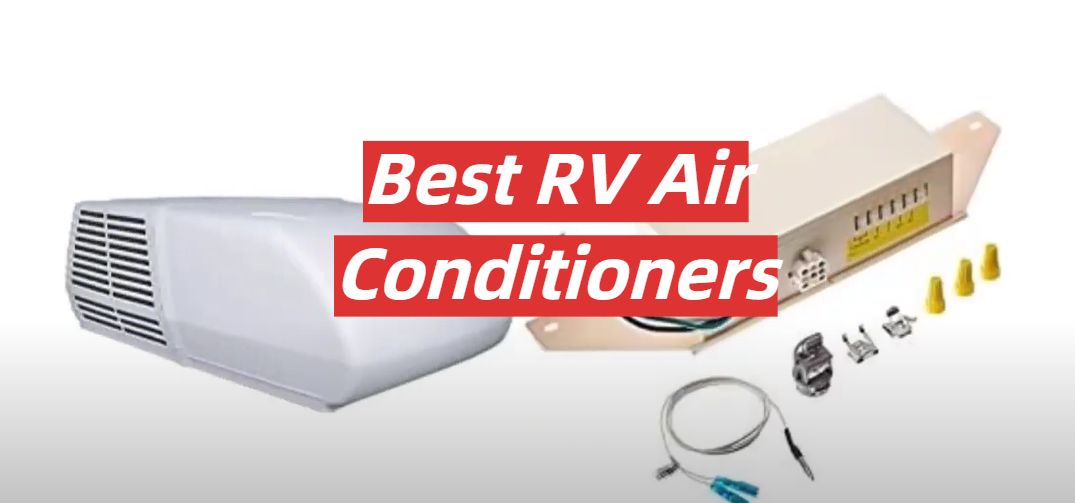

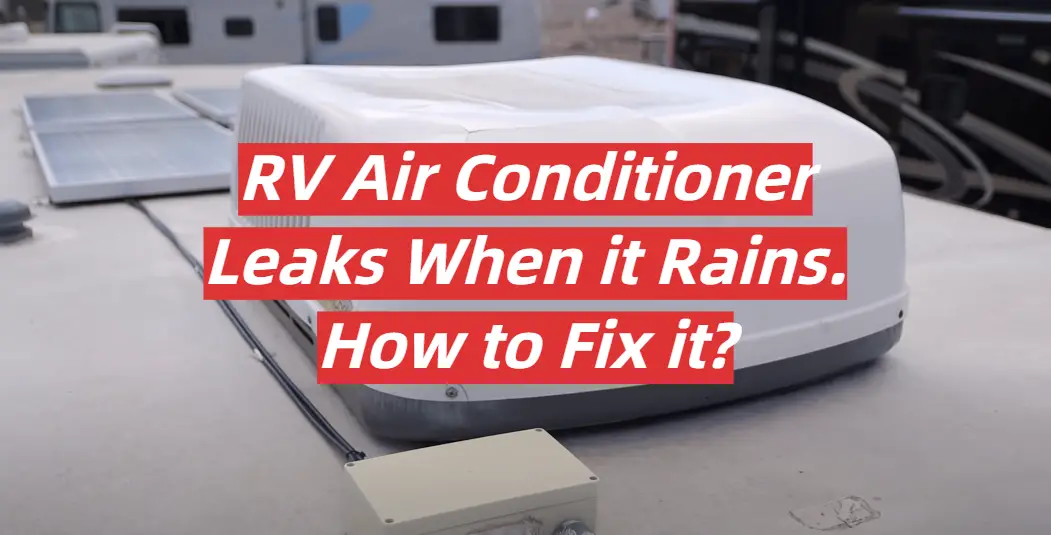
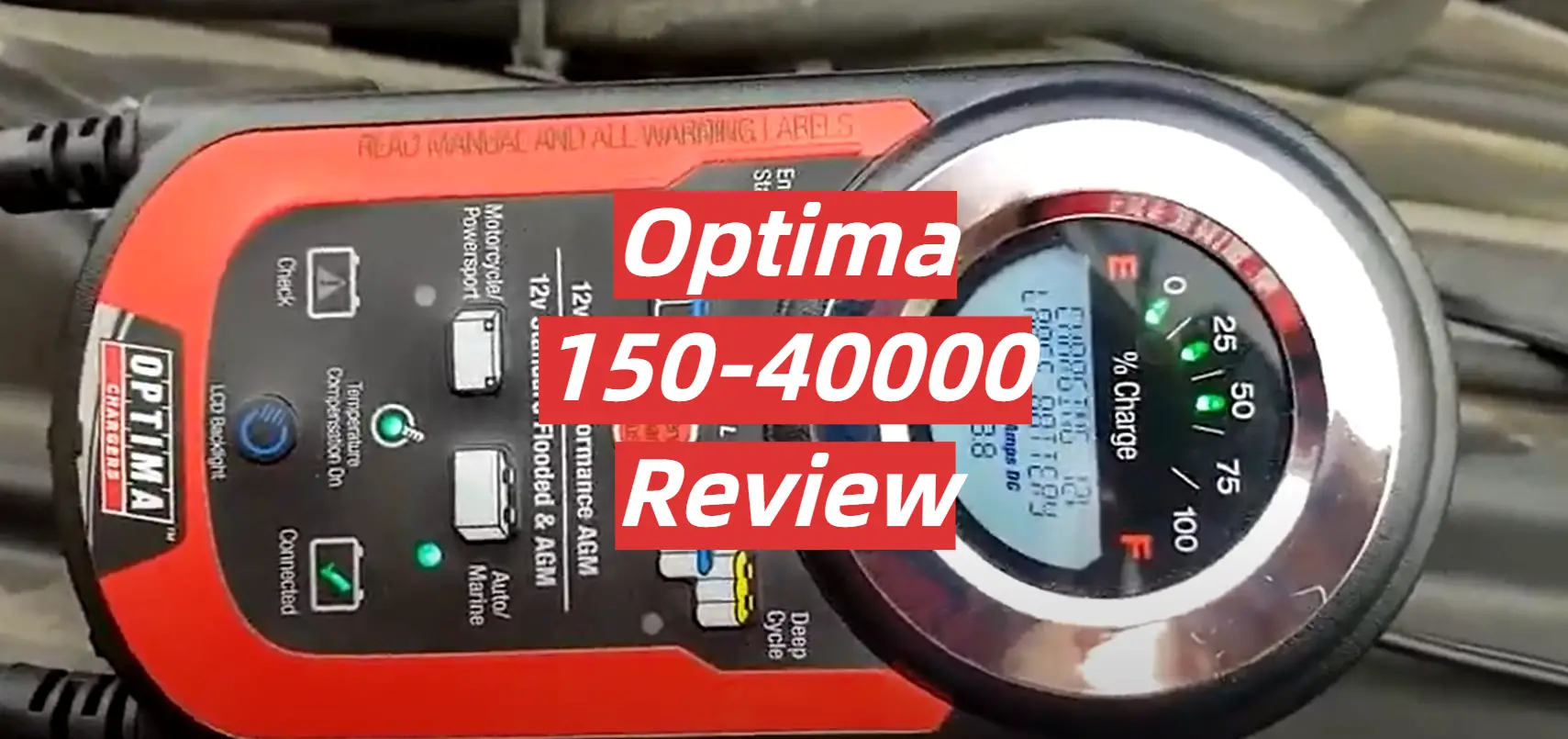

Leave a Reply